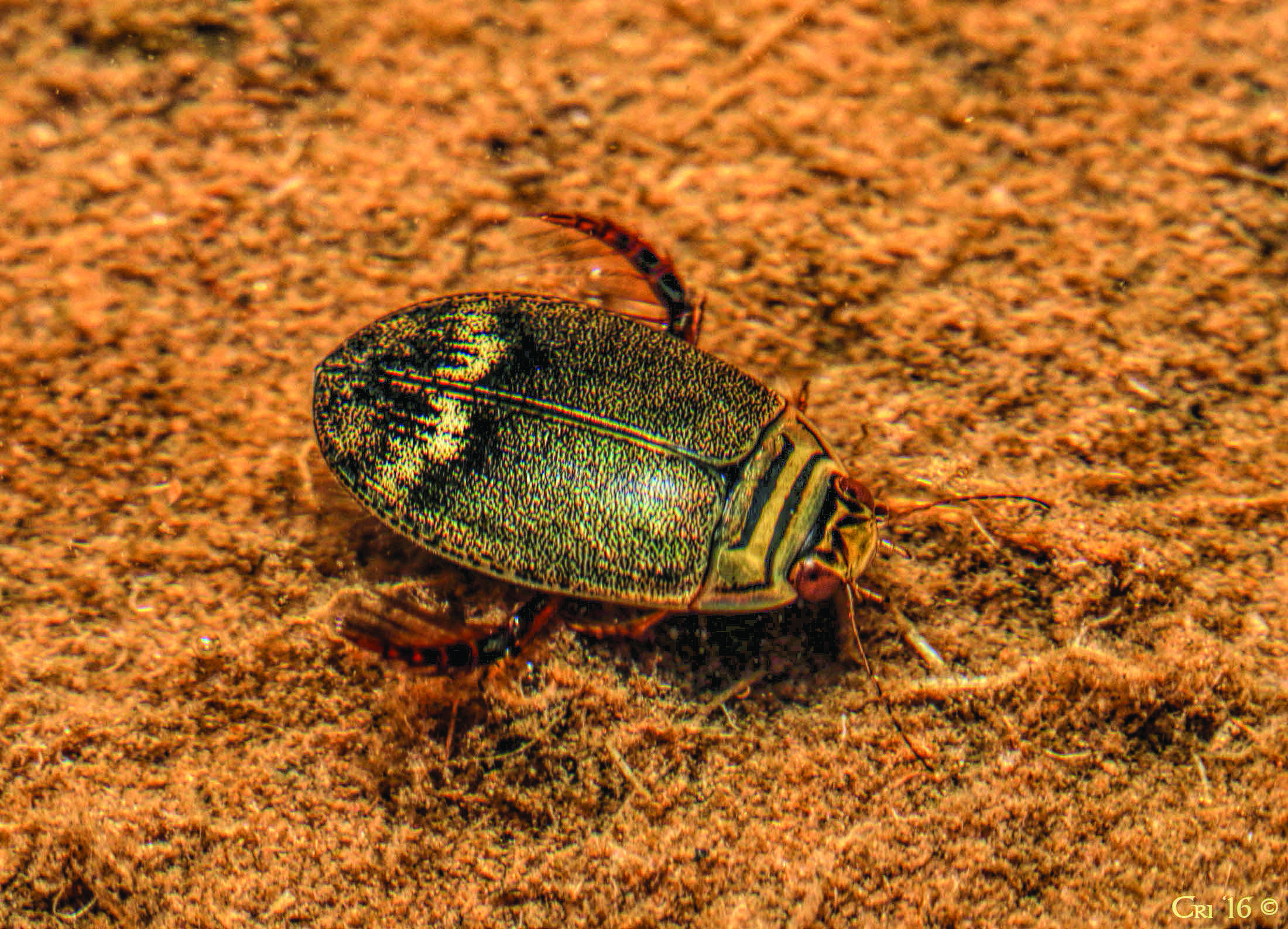
This week’s crawly is an excellent swimmer and one good-looking little beetle. Meet the Acilius abbreviatus predacious diving beetle. We’ll call them “Aci” for short. Aci is a western species, found along the West Coast and as far east as Idaho.
At just one-half inch in length, this bitty beetle is a smaller cousin of our giant water beetle (Genus Dytiscus) AKA “toe biters” who grow to a whopping one and one-quarter inches.
To be fair, Aci might bite your toe if you stepped on one accidentally, but it just wouldn’t have the same impact as their cousin.
Where all species of predacious diving beetles do have a positive impact is in our lakes and ponds. They can live in any type of freshwater but are less often found in fast-moving rivers and streams.
As their name implies, they are predators. Smaller diving beetles like Acis will mostly dine on small insects, worms, leeches, mollusks, tadpoles and small fish.
Acis eat larger prey as larvae than they do as adults. Just like hungry teenagers.
Some folks refer to predacious diving beetles by their nickname – “water tigers.” They have some serious mouth parts for chewing their food.
Acis prefer shallow, weedy, still water. As noted in our introduction, they are excellent swimmers; they have nifty hairs on their back set of legs to help propel them through the water. They swim via a “frog kick” with those specialized hind legs. Those legs combined with their sleek oval form give them a speedy edge over their potential meals.
Acis, and all predacious diving beetles, are also excellent flyers. This helps them disperse to new bodies of water if their population gets too large, they run low on prey or if they run low on water as ponds or vernal pools dry over summer.
Despite their life aquatic, diving beetles cannot breathe underwater. They must come up to the surface where they hold the tip of the abdomen above the water to gather air which they store under their wing covers (elytra) to breathe after they resubmerge. They have the ultimate built-in scuba gear.
Aci can live up to two years, though the full life cycle of many species of predacious diving beetles is a bit of a mystery. The larvae are very secretive, so determining the duration of their larval stage is difficult. Some species of diving beetles are kept as pets as adults, so it’s been easier to determine their mature lifespan.
Fun facts: Aci have compound eyes; thousands of individual photoreceptor units that together make up the eye. They also have blood, but it isn’t used to oxygenate their bodies, even though they also have a heart.
They take in oxygen through a tracheal system. Aci (and other divers) take air in through tubes along their bodies. This is moved into increasingly smaller fibers. Pumping movements of their bodies force that air along.
Acis specifically constitute one of our least common species of diving beetle, so you may not find one of these pretty, stripey critters.
However, there are approximately 500 species of predacious diving beetles in North America so have a look at any pond and you’ll almost certainly find a species or two. You might even see some active over the winter months on some of our warmer days.

